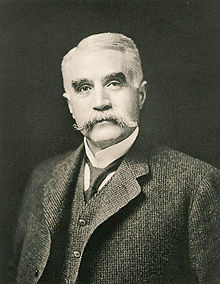Charles F. Brush
| Charles Francis Brush | |
|---|---|
 |
|
| Born |
March 17, 1849 Euclid, Ohio |
| Died | June 15, 1929 (aged 80) Cleveland, Ohio |
| Alma mater | University of Michigan |
| Known for | Arc lamp |
| Influences | Humphry Davy; Zénobe Gramme; Antonio Pacinotti |
| Notable awards |
Edison Medal (1913) Rumford Prize French Legion of Honor Franklin Medal |
| Signature | |
Charles Francis Brush (March 17, 1849 – June 15, 1929) was an American engineer, inventor, entrepreneur and philanthropist.
Born in Euclid Township, Ohio, Brush was raised on a farm about 10 miles from downtown Cleveland. He had a great interest in science, particularly with Humphry Davy's experiments with the arc light; he tinkered with and built simple electrical devices such as a static electricity machine at age 12, experimenting in a workshop on his parents' farm. Brush attended Central High School in Cleveland where he built his first arc light, and graduated there with honors in 1867. His high school commencement oration was on the "Conservation of Force". He received his college education from the University of Michigan, where he studied mining engineering (there were no majors—as there are today—in electrical engineering). At Michigan, Brush was a member of Delta Kappa Epsilon fraternity (Omicron chapter).
In 1876 he secured the backing of the Wetting Supply Company in Cleveland to design his "dynamo" (an electrical generator) for powering arc lights. Brush began with the dynamo design of Zénobe Gramme but his final design was a marked divergence, retaining the ring armature idea that originated with Antonio Pacinotti. Brush remarked on his motivation for improving the generator in his U.S. Patent 189,997: "The best forms of magneto-electric apparatus at present before the public are unnecessarily bulky, heavy, and expensive, and are more or less wasteful of mechanical power." After comparing it to the Gramme dynamo and other European entrants, the Franklin Institute of Philadelphia judged Brush's dynamo superior due to its simpler design and maintainability after completing tests in 1878.
...
Wikipedia
